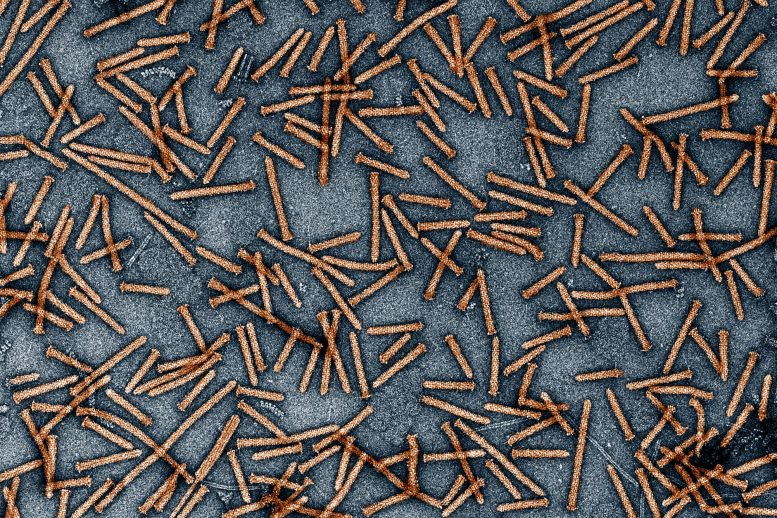
Purified Photorhabdus virulence cassettes (PVCs), imaged using TEM. Credit: Joseph Kreitz, Broad Institute of MIT and Harvard, McGovern Institute for Brain Research at MIT
Bacterial Injection System Delivers Proteins in Mice and Human Cells
With further development, the programmable system could be used in a range of applications including gene therapy and cancer therapy.
Researchers at the Broad Institute of MIT and Harvard and the McGovern Institute for Brain Research at MIT have harnessed a natural bacterial system to develop a new protein delivery approach that works in human cells and animals. The technology, described recently in the journal Nature, can be programmed to deliver a variety of proteins, including ones for gene editing, to different cell types. The system could potentially be a safe and efficient way to deliver gene therapies and cancer therapies.
Led by Broad core institute member and McGovern Institute investigator Feng Zhang, the team took advantage of a tiny syringe-like injection structure, produced by a bacterium, that naturally binds to insect cells and injects a protein payload into them. The researchers used the artificial intelligence tool AlphaFold to engineer these syringe structures to deliver a range of useful proteins to both human cells and cells in live mice.
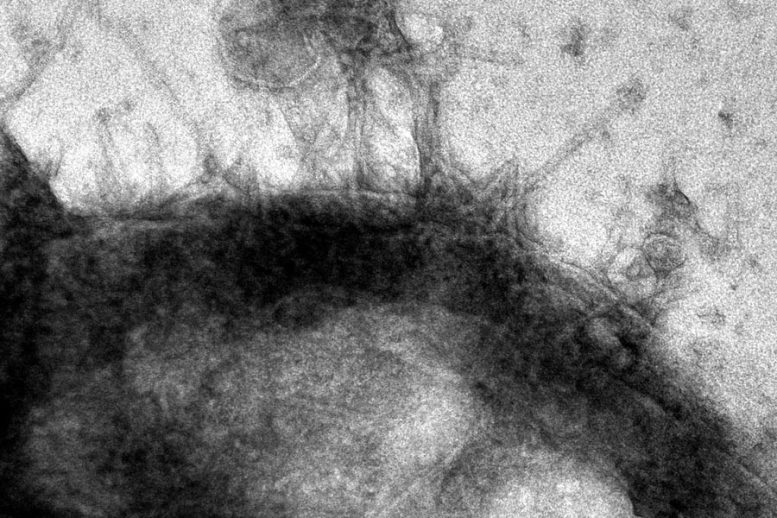
Programmed Photorhabdus virulence cassettes bound to a cancer cell, imaged with transmission electron microscopy. Credit: Joseph Kreitz/Broad Institute, McGovern Institute
“This is a really beautiful example of how protein engineering can alter the biological activity of a natural system,” said Joseph Kreitz, the study’s first author and a graduate student in Zhang’s lab. “I think it substantiates protein engineering as a useful tool in bioengineering and the development of new therapeutic systems.”
“Delivery of therapeutic molecules is a major bottleneck for medicine, and we will need a deep bench of options to get these powerful new therapies into the right cells in the body,” added Zhang. “By learning from how nature transports proteins, we were able to develop a new platform that can help address this gap.”
Zhang is senior author on the study and is also the James and Patricia Poitras Professor of Neuroscience at MIT and an investigator at the Howard Hughes Medical Institute.
Injection via contraction
Symbiotic bacteria use the roughly 100-nanometer-long syringe-like machines to inject proteins into host cells to help adjust the biology of their surroundings and enhance their survival. These machines, called extracellular contractile injection systems (eCISs), consist of a rigid tube inside a sheath that contracts, driving a spike on the end of the tube through the cell membrane. This forces protein cargo inside the tube to enter the cell.
On the outside of one end of the eCIS are tail fibers that recognize specific receptors on the cell surface and latch on. Previous research has shown that eCISs can naturally target insect and mouse cells, but Kreitz thought it might be possible to modify them to deliver proteins to human cells by reengineering the tail fibers to bind to different receptors.
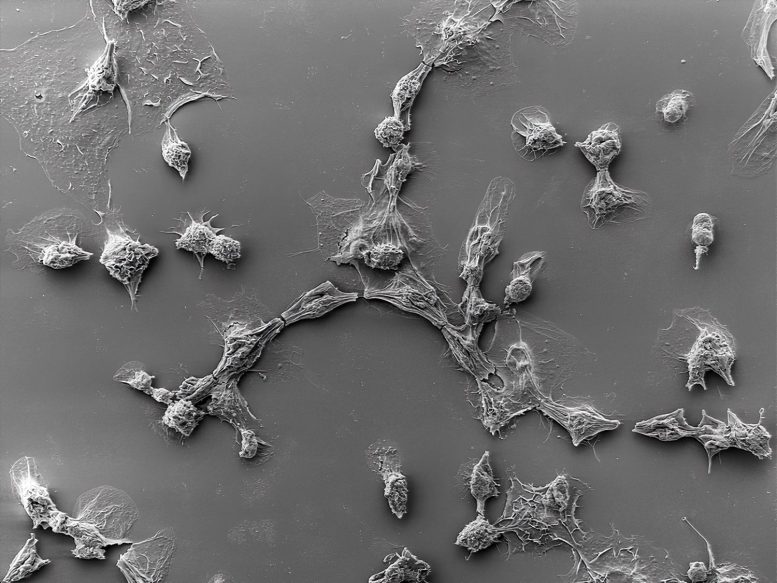
Cancer cells killed by programmed Photorhabdus virulence cassettes, imaged with a scanning electron microscope. Credit: Joseph Kreitz/Broad Institute, McGovern Institute
Using AlphaFold, which predicts a protein’s structure from its amino acid sequence, the researchers redesigned tail fibers of an eCIS produced by Photorhabdus bacteria to bind to human cells. By reengineering another part of the complex, the scientists tricked the syringe into delivering a protein of their choosing, in some cases with remarkably high efficiency.
The team made eCISs that targeted cancer cells expressing the EGF receptor and showed that they killed almost 100 percent of the cells, but did not affect cells without the receptor. Though efficiency depends in part on the receptor the system is designed to target, Kreitz says that the findings demonstrate the promise of the system with thoughtful engineering.
The researchers also used an eCIS to deliver proteins to the brain in live mice — where it didn’t provoke a detectable immune response, suggesting that eCISs could one day be used to safely deliver gene therapies to humans.
Packaging proteins
Kreitz says the eCIS system is versatile, and the team has already used it to deliver a range of cargos including base editor proteins (which can make single-letter changes to DNA), proteins that are toxic to cancer cells, and Cas9, a large DNA-cutting enzyme used in many gene editing systems.
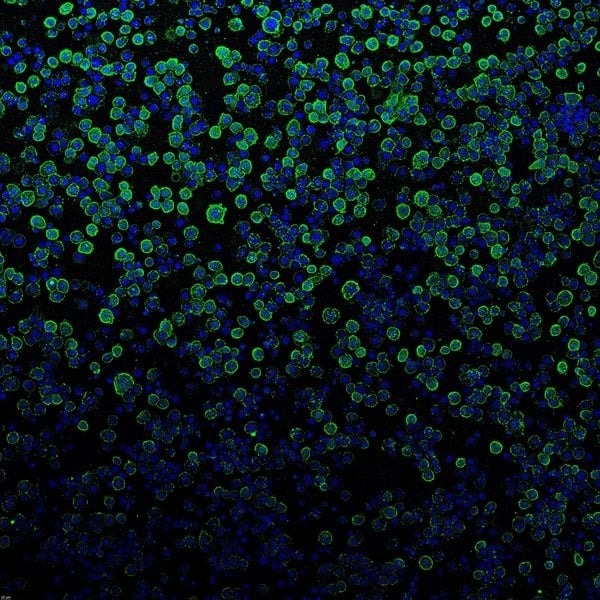
Photorhabdus virulence cassettes (green) binding to insect cells (blue) prior to injection of payload proteins. Credit: Joseph Kreitz/Broad Institute, McGovern Institute
In the future, Kreitz says researchers could engineer other components of the eCIS system to tune other properties, or to deliver other cargos such as DNA or RNA. He also wants to better understand the function of these systems in nature.
“We and others have shown that this type of system is incredibly diverse across the biosphere, but they are not very well characterized,” Kreitz said. “And we believe this type of system plays really important roles in biology that are yet to be explored.”
Reference: “Programmable protein delivery with a bacterial contractile injection system” by Joseph Kreitz, Mirco J. Friedrich, Akash Guru, Blake Lash, Makoto Saito, Rhiannon K. Macrae and Feng Zhang, 29 March 2023, Nature.
DOI: 10.1038/s41586-023-05870-7
This work was supported in part by the National Institutes of Health, Howard Hughes Medical Institute, Poitras Center for Psychiatric Disorders Research at MIT, Hock E. Tan and K. Lisa Yang Center for Autism Research at MIT, K. Lisa Yang and Hock E. Tan Molecular Therapeutics Center at MIT, K. Lisa Yang Brain-Body Center at MIT, Broad Institute Programmable Therapeutics Gift Donors, Pershing Square Foundation, W. Ackman, N. Oxman, J. and P. Poitras, BT Charitable Foundation, C. and L. Asness, the Phillips family, D. Cheng, and R. Metcalfe.

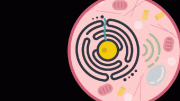


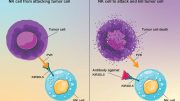
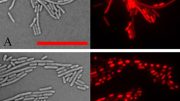
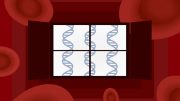


Be the first to comment on "Nature’s Nano-Syringes: Harnessing Bacterial Machines for Next-Gen Medicine"